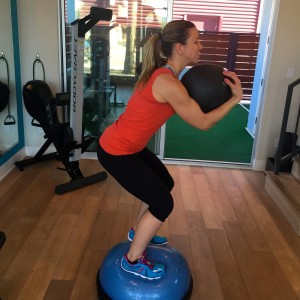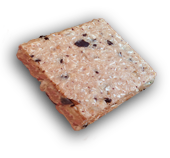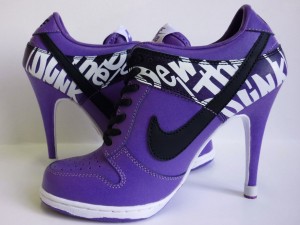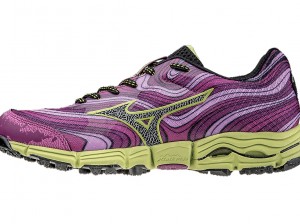 Prob been a while since the SAT word association drills, but see if you can figure this one out:
Prob been a while since the SAT word association drills, but see if you can figure this one out:
Tire : Car as Shoe : ???
Foot. Yes! You aren’t just a dumb jock!
As bi-peds our feet are the only part that consistently comes in contact with the ground. Lacing up the proper training shoes is key to getting the results you obviously keep me around for. Like the tires on a car, ill-fitting or worn out tread and internal support can result in slips and skids, as well as unneeded joint impact to the ankles, knees and hips with every step. Hassled a few of you to get some new kicks recently, but I’m really pushing it now after running (that’s how I shop) by DSW in the Marina Marketplace and finding some incredibly well-priced running and training shoes!
Likewise, awesome selection of fitness shoes online. Watch for changing promo codes on the site, but shipping is consistently free for orders over $35. In contrast to many rewards programs, DSW’s is worth enrolling in as you get $10 coupons for every $100 spent (1000 points), and in the case of double points…well, you’re smart cookies who can tabulate a food and exercise log…you do the math! Another great store for the money, Off Broadway in Hollywood, which sadly is a hike for me since we moved to the westside.
Breaking down a few basics:
1. Width.
Wide: New Balance, Addidas
Narrow/Normal: Mizuno, Asics, Brooks, Puma, Nike
Fashion vs function brands: Puma. Also avoid high heel sneakers. Too much time in heels places undue stress on foot bones & shortens your achilles. If you find yourself permanently walking on toes (even barefoot) & uncomfortable out of heels, you need to work on lengthening achilles. (Took two years to normalize transitioning from my former life in advertising/Heel City)!
Sketchers: WTF? I’ve actually had not one, but 2 prospects come to 1st training session in Sketcher’s ShapeUps. What’s even more surprising than arriving in placebo toning shoes with rounded soles, is that both of these people were male!?
2. Type.
Cross Trainers: Great all purpose shoe, can be used in the gym, for light running and most court sports.
Running Shoes: Vital for long distance running, the arch support and added cushion protects feet from the harsh tarmac. Additionally, trail/outdoor running shoes have a more rugged sole that extends out wider around the shoe: great to help grip uneven terrain, but obnoxious and potentially dangerous for runs on pavement or indoor cross training workouts as you can trip on the wider sole.
Minimalist: Use with caution, while the barefoot sensation makes a compelling argument, the limited support and cushioning can result in increased injury unless your form is absolutely perfect, especially during running or jumping/bounding exercises, which increase force placed on delicate bones in feet.
For more on foot injuries common to training in minimalist shoes, read this from Podiatrist Jenny Sanders: Minimalist Shoes And Injuries: Keys To Diagnosis And Patient Education
Lifting: If you’re doing any olympic lifting, heavy squats or deadlifts, these are the shoes for you. The elevated heel takes the strain off the knee joint and the stable flat sloes allow for maximum force transfer. Do NOT use them for anything else, particularly not crossfit circuits involving burpees or other bouncing exercises mixed with olympic lifts.
3. Level of Support. Choosing the right amount of support is vital when choosing shoes, if you have high arches, make sure you choose a shoe with substantial arch support. If you have dodgy ankles, make sure you choose a shoe with good lateral support, even consider a pair of high tops to provide extra ankle support. If your prone to stress fractures make sure you get a shoe with enough cushioning and good midsole support.
Lastly, the perfect shoe for your foot & activity is only effective when properly laced! Mama had a point when she said not to kick your shoes off and on without untying. This not only breaks down the back of the shoe, shortening it’s lifespan, but also renders shoe too loose to actually help you connect with the ground during workouts.











